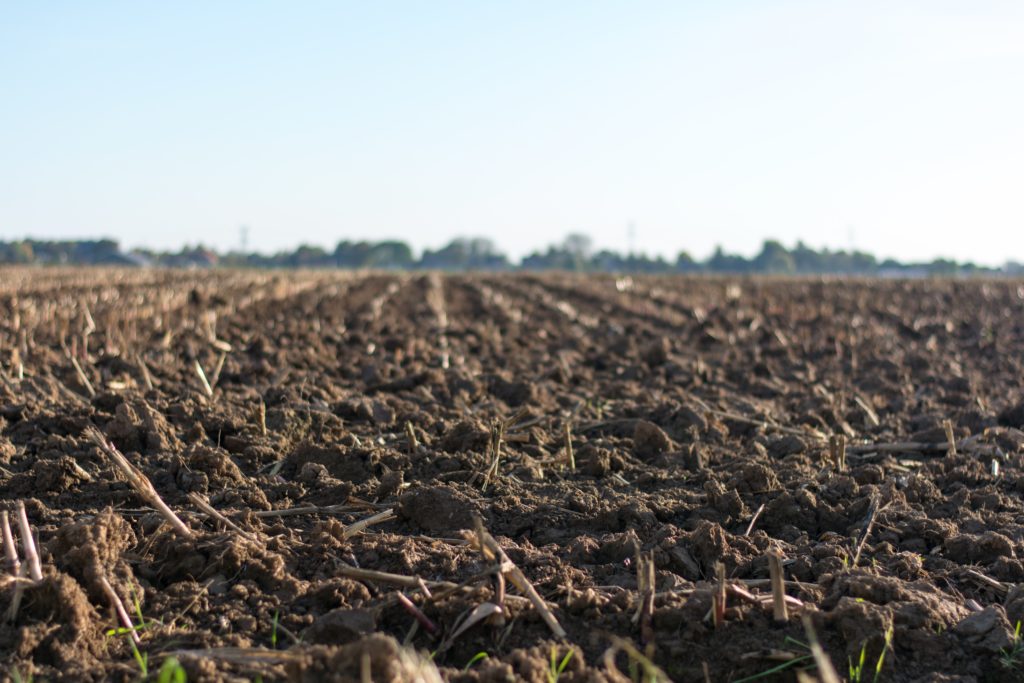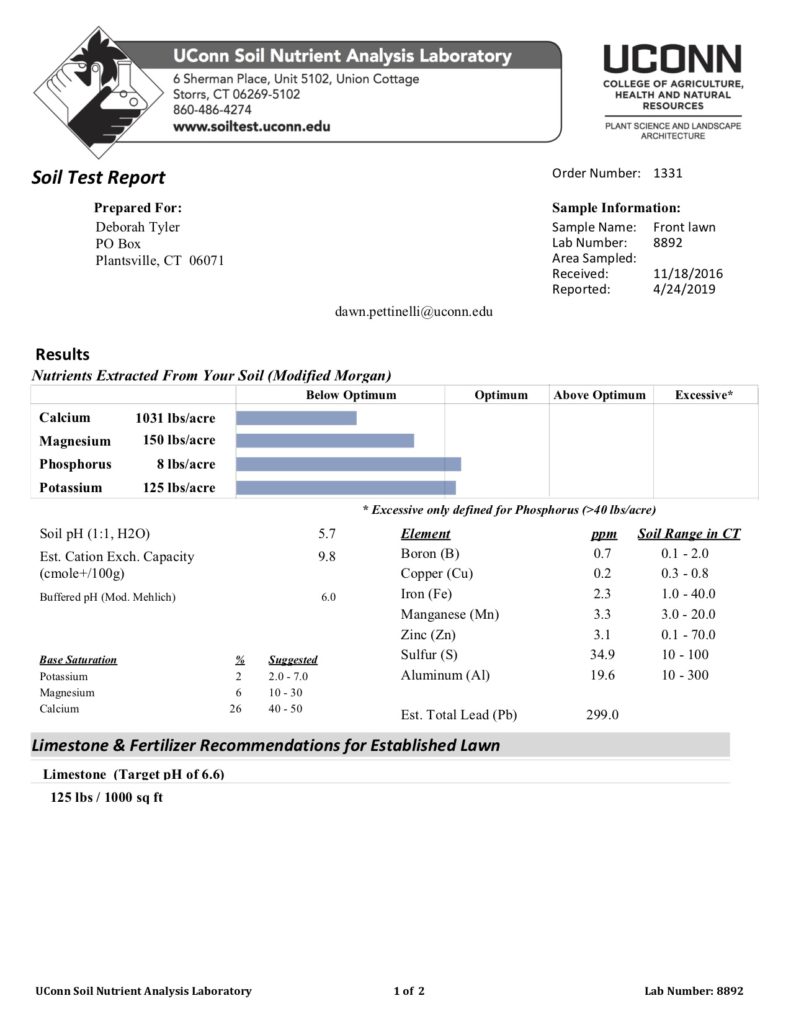Why you should get a soil test (and what to do with it when you do)

You have piles of compost, your seedlings are flourishing and you are preparing to transplant them to your garden. You may think you are ready for spring gardening season, but it is possible that you are missing one key component: a soil test.
Whether you a first-time gardener or you have been using the same plot for decades, starting your season with a soil test is one of the best ways to make sure your garden will thrive.
“You can’t really tell the nutrient values [of soil] are by looking or smelling or tasting the soil,” said Dawn Pettinelli, laboratory manager at the UConn Soil Nutrient Analysis Laboratory. “It’s kind of like if you’re driving someplace and you don’t have your phone with the map on it: you can get to where you’re going, but without specific directions it’ll take you longer to get there.”
A soil test, which is generally either conducted by your local cooperative extension or another testing facility, will provide you with an analysis of the basic components of your soil, including pH (the measurement of the acidity or alkalinity of the soil), phosphorous, potassium and key nutrients like calcium and magnesium.
Because soil tests generally take a few weeks to process, the best time to get a soil test is early spring when the soil has thawed or in the fall before the ground freezes so the results will be ready in time for planting. Even if you are a little late, testing your soil will provide you with valuable information about the health of your garden.
Where to get a soil test
You can purchase home soil test kits (and even start with some easy home soil tests to get an idea of what you are working with), but Pettinelli said that it is not like getting one done at a lab.
“If you want to play around with it, feel free,” Pettinelli said. “[Gardeners could] send half to lab and do half themselves and see if the results are comparable.”
To find out the best place to get a soil test, ask your local cooperative extension. Some cooperative extensions will have labs on-site, but even if they do not, they will be able to guide you to the best place to get testing done.
It is always better to get your soil test done locally because local labs will be more attuned to testing for issues that are common in your area. Soils are formed differently based on where you are sampling them from, and locals labs are most likely to be prepared with the proper equipment and chemicals to test your sample. Pettinelli said local labs will also make more helpful recommendations based on area field studies.
“Different labs will have different extracting solutions and different recommendations based on the soils,” Pettinelli said. “The number one thing to do is check your local [cooperative extension].”
Your local extension office will also help guide you into how to best collect soil samples, including how many samples you should include from around the plot you are testing and the depth at which you should be drawing your samples.
“Your results are only as good as your samples,” Pettinelli explained. “If you take several samples and mix them together, that gives you a better average or better representative sample.”
What does a soil test show

The results of the test will show how the nutrient content of your soil compares to the healthy ranges for your region. The test will also come with amendment suggestions based on that composition, though the exact format of the soil test depends on who is administering it.
Pettinelli said that the UConn Soil Nutrient Analysis Laboratory will provide the values in a chart and will indicate whether the sample’s values are “below optimum, optimum, or above optimum.” Other labs may only provide numerical values, a different pictographic representation of the data or use different terminology, like low, medium and high.
“It varies a lot from lab to lab,” said John Sawyer, professor and soil fertility extension specialist at Iowa State University. “Among states, you might have different labs with a different format. Structurally, they can be set up differently, with different interpretations and lists of tests.”
Pettinelli admitted that the values are a “good diagnostic,” but the “numbers don’t really mean anything to people.” What really matters is the recommendations.
“We use the measurements to make limestone and fertilizer recommendations,” Pettinelli said. “Any time we can make a single nutrient recommendation, we do give organic options, vegan option and chemical option. We try to list products that people can find.”
What you plan to grow in your garden matters for the results, too. The soil testing facility will usually ask you what you plan on growing in order to make accurate recommendations about the dose of fertilizer and the rate of application.
“We have people tell us what they want to grow and we help them meet the needs of the plants,” Pettinelli said. “People will bring in soil and say, ‘Tell me what this is good for.’ We don’t have that ability.”
The soil test recommendations, especially if they are procured locally, will also help you to be a better steward of the local environment when you are gardening.
“People tend to over-fertilize which causes environmental problems,” Pettinelli said. “The soil test will help people grow their plants better, and it is more environmentally sustainable to follow regulations.”
If you are overwhelmed by the charts and values, your local cooperative extension will also help you to interpret your results.
“Your local cooperative extension officer is a prime source,” Sawyer said. “That should be your number one place to get the information to interpret the test results. You can work with the laboratory on that interpretation, and a local garden store also may have personnel that can help with interpretation.”
What may a soil test omit
Some labs will also test for contaminants that are relevant to your area. Pettinelli said that the UConn Soil Nutrient Analysis Laboratory will test for lead because it is such a prevalent problem in Connecticut soils.
“We do a lead scan on all of our soils,” Pettinelli said. “About 20 percent of our soils come contaminated with lead. It’s a fairly widespread issue in a place like Connecticut. We send people appropriate interpretation sheets [explaining] what the lead level means and what you should do about it.”
To test for other contaminants, though, you may have to ask for an additional tests or look to other soil testing agencies to cover all your bases.
“Some people concerned for more heavy metals, like mercury, arsenic or something like that, or pesticides, but that gets trickier,” Pettinelli said. “It’s not easy. There are too many different chemicals to look for.”
Because many contaminants require their own test, Pettinelli recommends researching your property to see what the potential issues could be — the discharge from a nearby factory, for example, or the pesticide history of a farm that used to be there if you are gardening on an older property.
“You can contact environmental testing agencies, but you still have to tell them what to test for because have different molecular structures,” Pettinelli said.
How often should you test your soil
Even if you have had your soil tested before, you may be due for another soil test. Consistency matters when tracking the health of your soil.
“Soil testing should be an ongoing process,” Sawyer said. “Just because you do one today doesn’t mean you never do another one.”
Garden plots should be tested every two to four years, especially if you are providing compost or manure, in which case you would not want the level of nutrients to be too high.
“It needs to be more than once in a person’s lifetime as a gardener,” Sawyer advised. “Maintain the test results and track them over time.”
Ultimately, though, it is worth it to take the extra step of getting your soil tested. With so many uncertainties in the gardening process — from surprise spring snowstorms to pesky pests — making sure your garden’s foundation is steady will help increase the chances that your plants will flourish.
